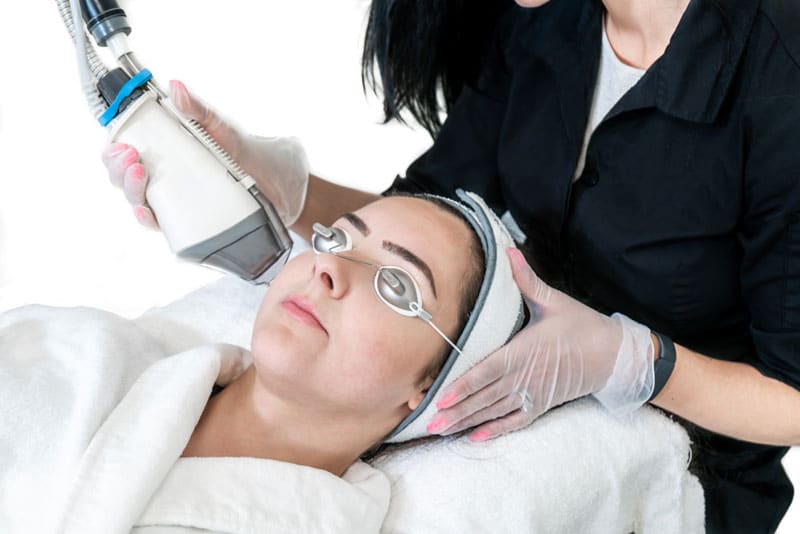Mole Removal and Scar Removal Treatment
In 2009 I was seen by a dermatologist for a mole on my chest that I felt was changing in shape, diameter, and colour. Before this, I had learned the ABCDE’s of mole assessment and therefore, I was alarmed to notice that a lesion on my body was changing in various categories. The ABCDE’s of mole assessment are: Asymmetry (if you were to divide the lesion in half, would it look the same on either side?); Border (is the border of the lesion clean?); Colour (is it one solid colour or is the mole a mix of dark and light pigmentation?); Diameter (is it growing in size?); Elevation (is it elevated from the surrounding skin at all?). Since my mole ticked a number of these categories, I book an appointment to have it removed by a dermatologist.

With the mole being quite small, I was confident that there should not be a scar or if there was, I assumed that it would be quite small and therefore, not too noticeable. The dermatologist explained to me that he would only be taking a small ‘punch biopsy’ which would not leave a scar. This was done quite quickly, however, I was shocked to see that procedure left me with three sutures. In ten days these were removed and I was glad to receive the news that my mole was benign – meaning that it was nothing harmful to my health. Over the series of the next few months, I was noticing the area was very noticeable and was developing into a 1-2 inch hypertrophic scar. A hypertrophic scar is when the scar tissue becomes elevated.
I was always self conscious of this scar, but it was not until I began working at Q Esthetics that I found out that something could be done to fix it. I had the scar flatted with Kenallog, which is a corticosteroid injection that flattens the tissue and after this I had it resurfaced with a nonablative fractional laser. I did three of these treatments and I am so happy to say that my scar is no longer noticeable! I am so happy and much more confident wearing tops that show this area.

What is fractional laser resurfacing?
A laser that penetrates the dermal layer of the skin, heating up the targeted tissue cause microtrauma. The cells respond to this by stimulating the production of collagen (a protein that is found in the skin’s connective tissue) and this rejuvenates and renews the skin. In time, this fresh skin surfaces to the visible layers (hence the name ‘resurfacing’). This helps with fine lines, wrinkles, and scarring.
What is the downtime?
Q Esthetics uses a non-ablative fractional laser, meaning that it works internally leaving the outer layers of the skin unharmed. Some methods of resurfacing (such as C02 and Erbium) are ablative which means they are more invasive because they vaporize the outer layers of the skin and resurface it this way. The only downtime that I experienced was slight tingly/burning sensation for about 30 minutes and the scar became slightly more red for about 2 weeks.
How long does it take to see results?
Results will usually start to be seen within approximately 1 month, but full results are not seen until 3 months post treatment
Does the treatment take long to perform and is it safe?
The time of treatment is depended on how much space is being covered. Many clients come and have their whole face resurfaced for example, and this takes about 20 minutes from start to finish. The treatment for my small scar took less then 2 minutes to perform. The treatment is safe for all skin types!
How is mole removal done at Q Esthetics?
The health and safety of our clients is a number one priority at Q Esthetics and therefore, if a client feels their mole is of concern in any way (ABCDE), we encourage it to be looked at first by a dermatologist. If the mole is safe to remove, we use a method called Electrocautery. Electrocautery is an easy, efficient, virtually painless way of removing skin lesions. It is safe to use on all skin types, there is little downtime and best of all it leaves a little to no scar.
Emily McCormick
